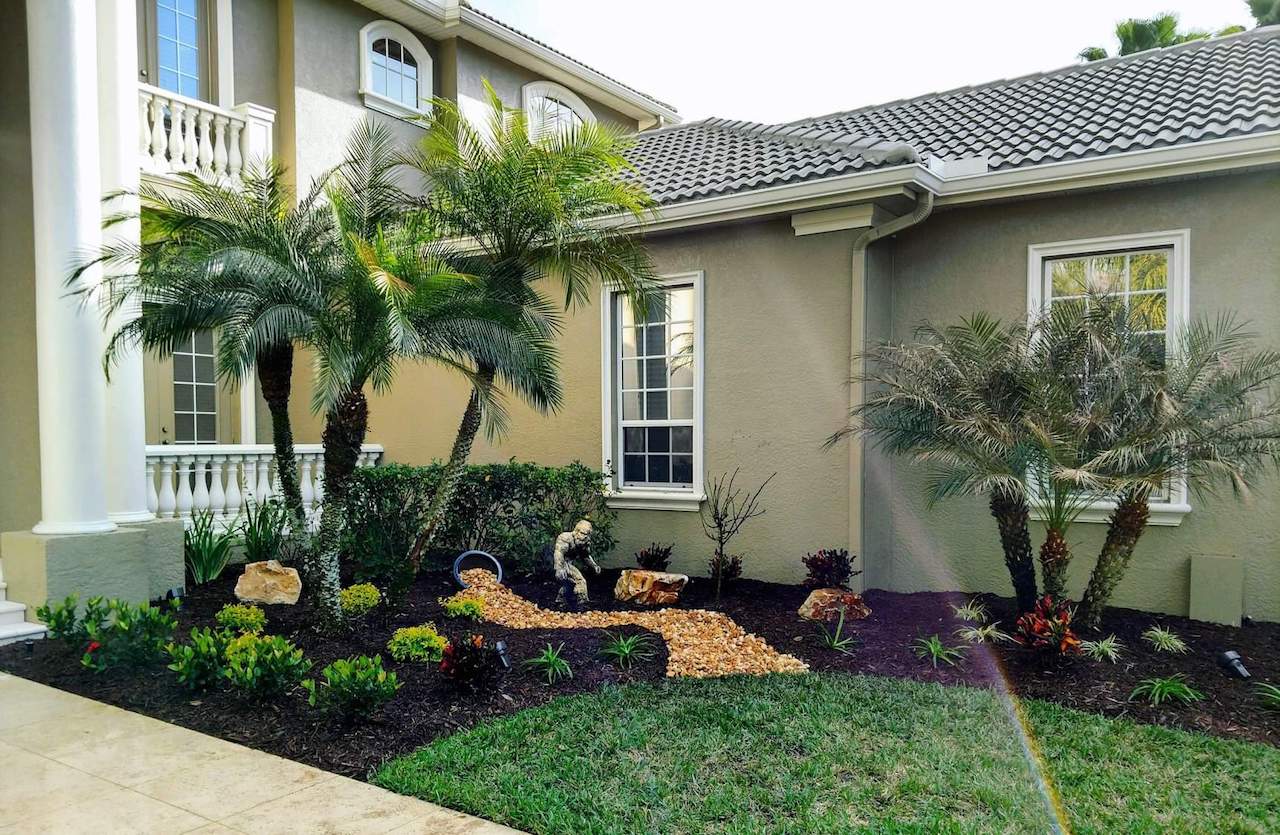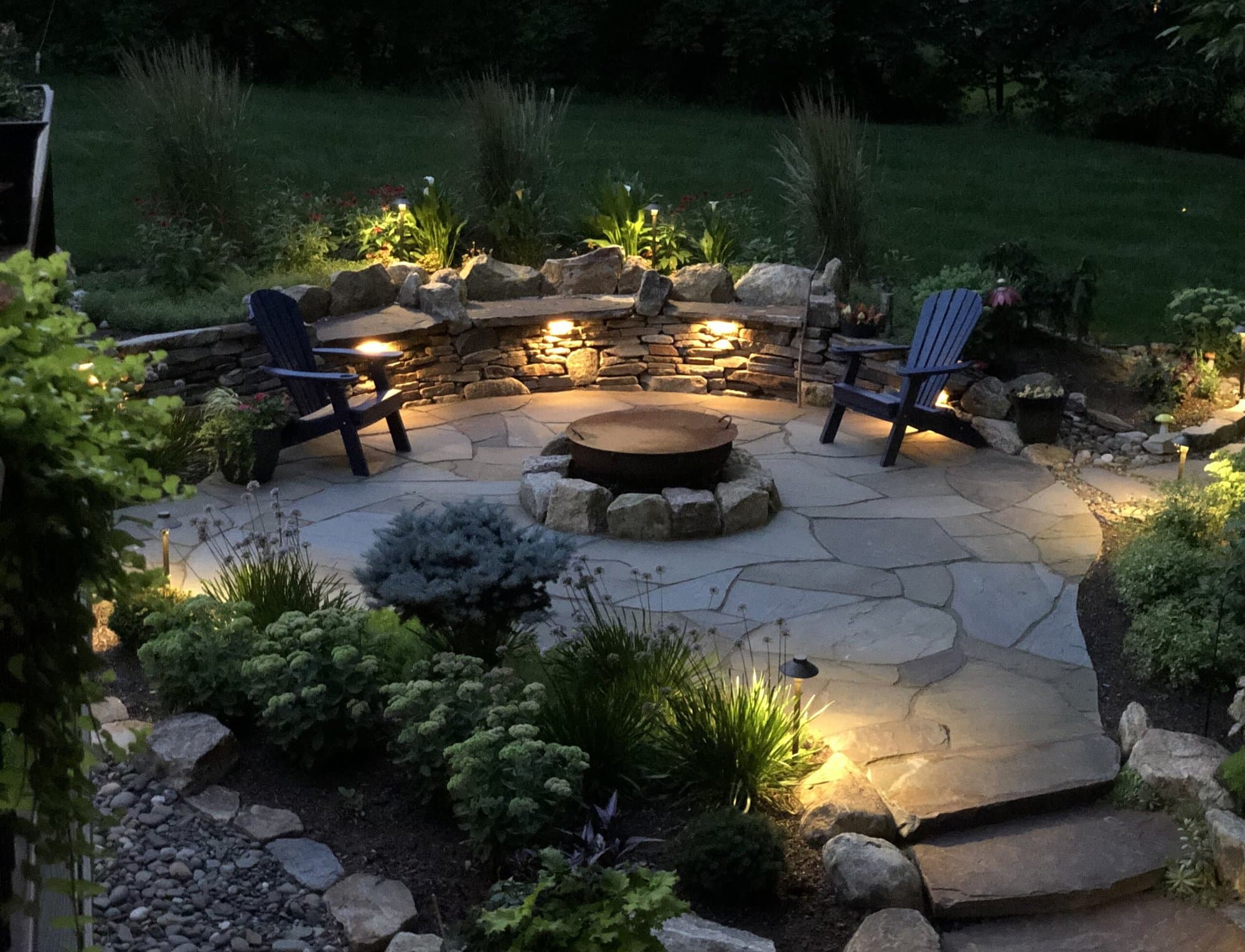The Best Guide to Preserving Your Yard with Palm Desert Landscaping
The Best Guide to Preserving Your Yard with Palm Desert Landscaping
Blog Article
A Comprehensive Guide to Designing and Implementing Effective Landscaping Solutions
The art and science of landscape design extend past mere visual appeals; they entail a thoughtful integration of design principles, environmental stewardship, and practical implementation. A comprehensive guide to reliable landscape design options starts with a comprehensive understanding of your outside room, emphasizing the value of proportion, unity, and balance. As we explore sustainable techniques and the selection of ideal plants, the implications for biodiversity and neighborhood well-being become significantly apparent. What methods can one employ to make sure these landscapes not only prosper yet also flourish attuned to their surroundings?

Comprehending Landscape Design Concepts
One might wonder what fundamental components contribute to efficient landscape style. At its core, effective landscape style rests on several crucial principles that assist the plan and choice of components within a space. These principles include unity, percentage, equilibrium, and rhythm, each serving to produce a harmonious outside setting.
Unity describes the natural connection among different components, making certain that they interact visually and functionally. Equilibrium can be accomplished with in proportion or unbalanced arrangements, permitting the landscape to really feel secure and inviting. Percentage involves recognizing the scale of aspects in relationship to each other and the surrounding environment, promoting aesthetic consistency and convenience.

Analyzing Your Outdoor Room
Before carrying out the concepts of landscape design, a comprehensive assessment of your outside space is crucial. This initial evaluation aids specify the extent of your landscape design task and guarantees that your layout aligns with the special characteristics of your building. Begin by analyzing the dimensions of your space, taking precise measurements to understand the available location for numerous components such as pathways, patio areas, and gardens.
Following, observe the existing features of your landscape, consisting of topography, dirt top quality, and drain patterns. These variables substantially affect plant choice and positioning. Additionally, evaluate the sunshine exposure throughout various locations throughout the day, as this will influence the kinds of plants that thrive in your garden.
Take into consideration the microclimates produced by structures, trees, and other barriers, as they can affect temperature level and dampness degrees. Take note of any kind of existing plants or hardscape aspects that you desire to remove or retain. This detailed examination prepares for a educated and efficient landscape design option, making sure that your style is not only visually pleasing yet also functional and lasting for several years to come.
Lasting Landscaping Methods
These methods not just advertise environmental balance however likewise boost the practical and aesthetic worth of a landscape. Applying effective watering systems, such as drip irrigation, minimizes water waste and makes certain that plants receive sufficient moisture (Palm Desert Landscaping).

Another efficient strategy is the strategic placement of hedges and trees to give natural windbreaks and color, therefore decreasing power prices (Palm Desert Landscaping). Rain gardens can be incorporated into the landscape layout to take care of stormwater overflow effectively, filtering system pollutants before they get in rivers
Picking the Right Plants
Picking the right plants for your landscape is essential to attaining both visual allure and eco-friendly harmony. The procedure begins with an understanding of your local climate, soil problems, and the specific microenvironments within your landscape. Examining aspects such as sunshine direct exposure, dampness levels, and existing vegetations will certainly help you choose plants that flourish in your one-of-a-kind setup.
Think about including indigenous plants, as they are well-adapted to local problems, require less upkeep, and support regional wild animals. Additionally, choosing a diverse variety of varieties can boost biodiversity while minimizing the threat of disease and insect break outs. It is essential to evaluate the growth routines, blooming durations, and seasonal colors of possible plants to create a cohesive and vibrant landscape.
In addition, assume concerning the intended use of the area; as an example, if the area will certainly experience high foot website traffic, go with durable ground covers. By thoughtfully picking plants that line up with both your ecological requirements and aesthetic objectives, you can develop a sustainable landscape that not only boosts your building but additionally adds favorably to the surrounding ecological community.

Implementation and Upkeep Strategies
As soon as the appropriate plants have actually been picked for your landscape, the emphasis changes to efficient execution and continuous maintenance methods. Effective setup begins with proper website preparation, which includes soil testing to determine nutrient levels and pH, followed by amending the soil as needed. Meticulously arrange plants according to their growth habits and light demands, guaranteeing appropriate spacing to go now promote healthy development.
Watering is a vital component of application. Establish a watering timetable that takes into consideration the details requirements of each plant varieties, readjusting for seasonal changes. Using drip watering systems can improve water effectiveness and minimize overflow.
Upkeep techniques should be applied to make sure the durability and vigor of your landscape. Routine tasks consist of weeding, mulching, and pruning to control development and prevent illness. Fertilizing needs to be conducted based on dirt examinations, providing the required nutrients without over-fertilizing.
Keeping track of for diseases and parasites is vital; early detection can protect against significant damage. Seasonal adjustments to maintenance regimens, such as preparing and winterizing perennials for spring development, will guarantee that your landscape remains healthy and balanced and aesthetically appealing year-round.
Conclusion
Successful execution and continuous upkeep further guarantee the durability and vitality of landscapes. By integrating these aspects, landscapes can be transformed into beautiful, useful environments that advertise biodiversity and add favorably to neighborhood well-being.
One might question what fundamental elements add to efficient landscape design. At its core, effective landscape design pivots on numerous vital principles that guide the setup and choice of elements within a room.Selecting the right plants for your landscape is essential to achieving both visual allure and ecological harmony. It is essential to examine the development routines, growing durations, and seasonal colors of possible plants to create a natural and dynamic landscape.
Once the ideal Continue plants have been picked for your landscape, the emphasis moves to reliable application and ongoing upkeep methods.
Report this page